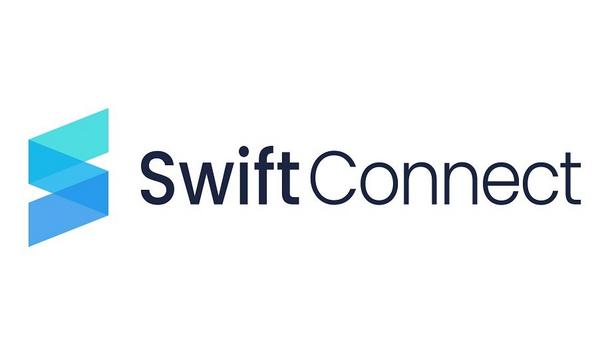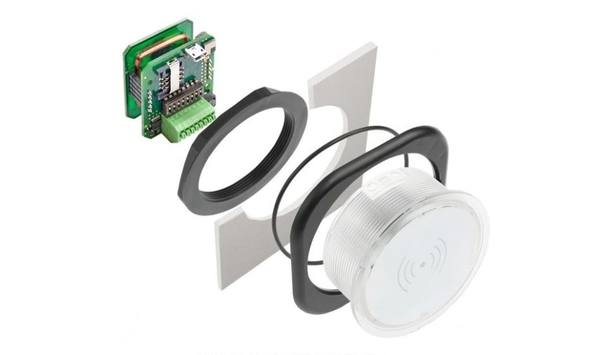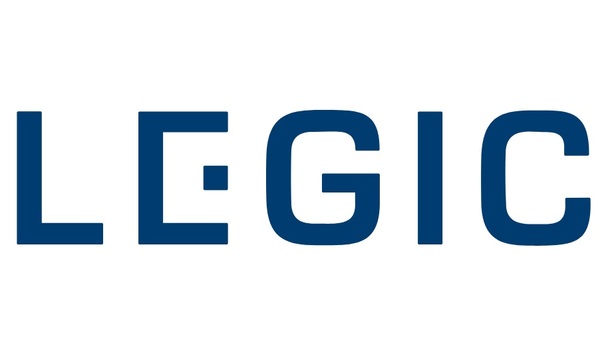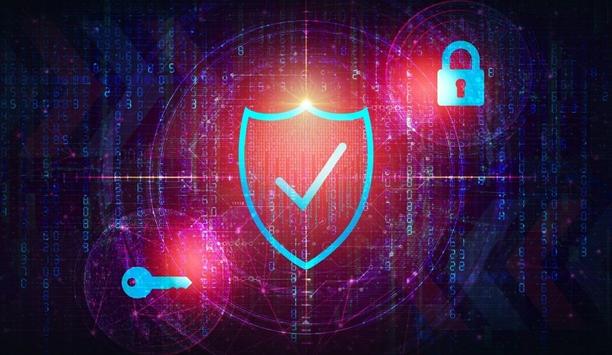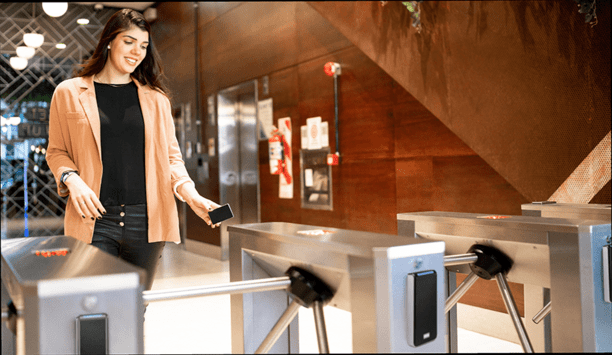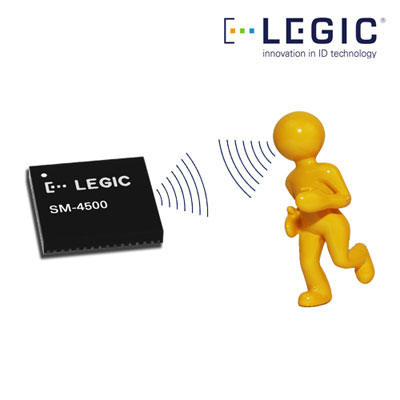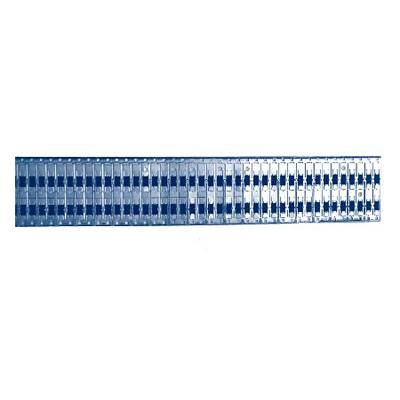LEGIC Identsystems Ltd - Experts & Thought Leaders
Latest LEGIC Identsystems Ltd news & announcements
SwiftConnect, the pioneering provider of connected access enablement, and Swiss-based LEGIC Identsystems, a global pioneer in secure authentication, access management and IoT platform solutions, announced a partnership to accelerate deployments of easy, hassle-free access using NFC wallets in mobile devices for major corporations across Europe and beyond. As an official LEGIC Partner, SwiftConnect is the first to enable corporate access via NFC wallets for LEGIC customers and its vast partner network – developers of readers, credentials, application software, and services. LEGIC’s pioneering service “We are excited to extend SwiftConnect’s proven expertise in NFC wallet integrations with LEGIC’s pioneering service for deploying secure mobile credentials into smartphones and other mobile devices. This solution is very attractive to our broad ecosystem of access control hardware partners and their end customers,” said John Harvey, Head of Business Unit Access Management, LEGIC Identsystems. “With our partnership, LEGIC and SwiftConnect are driving corporate access deployments in Europe via NFC wallets in mobile devices for large end customers. Our collaboration positions LEGIC extremely well to open opportunities in other vertical markets and geographies." Advantage of the complementary capabilities The joint customer uses LEGIC’s reader and secure credential provisioning and key management service A global financial institution headquartered in Europe has already begun to take advantage of the complementary capabilities that LEGIC and SwiftConnect offer large, multinational organisations. The joint customer uses LEGIC’s reader and secure credential provisioning and key management service. They turned to SwiftConnect to integrate employee badges in Apple Wallet with their existing physical access and IT infrastructure so employees can use an iPhone and Apple Watch for hassle-free experiences in their offices around the world. SwiftConnect’s range of supported technologies “Our strategic collaboration with LEGIC is fuelling our momentum by enabling SwiftConnect to power trusted mobile credentials in NFC wallets across LEGIC’s broad customer base and partner ecosystem for connected access to places, spaces and things,” said Josh Jagdfeld, VP of Partnerships at SwiftConnect. “The partnership expands SwiftConnect’s range of supported technologies and makes it possible for more customers in major industries to take advantage of our ability to create self-service and on-demand access experiences via mobile credentials.” Innovative mobile-based products LEGIC’s cloud-based Software as a Service (SaaS), known as LEGIC Connect, provides its core mobile credentialing service to over 14 million end-users in over 200 countries and territories. Its customers include large companies, hotel chains, multi-family housing, campuses, governments, and hundreds of system integrators who leverage mobile credentials to create useful and innovative mobile-based products and services. The SwiftConnect and LEGIC integration provide users with choice and flexibility to create frictionless experiences that transform how people access buildings and resources using a mobile ID via NFC wallet in their mobile device.
From buildings to vehicle fleets and enterprise networks to perimeter gates, having access control to let the right people in—while keeping everyone else out—is a security necessity. ELATEC, a global specialist in radio frequency identification (RFID) readers enabling user authentication for these and other access control applications, will introduce its latest new product the TWN4 Palon Compact Panel Reader at the ISC West Conference and Exhibition, to be held March 17-20, 2020 in Las Vegas, Nevada. Physical access control applications The Palon is a powerful, multi-function reader optimised for physical access control applications. Unlike traditional RFID readers, Palon’s unique capabilities include: Flexible architecture and a robust, open API to support custom applications and unique functionality Supports encryption for security applications Quick and easy updating to support emerging market requirements, and done so either remotely or via a contactless configuration card Reads and writes all major transponder technologies globally—60+, including HID Global, LEGIC and NXP, and NFC and BLE mobile device technologies for use with smartphones. Highly customisable panel mount Palon’s compact OEM PCB module is designed for integration into third-party products and devices. And its attractive, highly customisable panel mount is ideal for use in PAC panels, elevators, parking systems, EV chargers, kiosks and more. To see Palon and ELATEC’s suite of offerings, visit ELATEC booth #23006. Visitors can also see Palon in the new product showcase at ISC West.
With the OS50 firmware upgrade, several new features have been implemented to make the SM-6300 faster and even more powerful. New filter options in the search for Bluetooth devices enable the selection of specific devices, energy consumption is significantly reduced. Additionally, the generation of authorisation media for the LEGIC Master-Token-System-Control (MTSC) solution and the creation of LEGIC prime and advant segments on LEGIC smartcards are possible with the new SM-6300init. LEGIC Master-Token-System-Control solution The SEARCH command for LEGIC reader ICs offers an easy and efficient way to communicate with different devices. When using the Bluetooth Low Energy transparent mode of the SM-6300, there is a growing demand for a filtering capability to precisely select a device, as more and more Bluetooth devices are around. With the new OS50, there are now more filter options available, allowing the reader to specifically find Bluetooth Low Energy devices that advertise certain data. In previous firmware versions the SEARCH command executed sequentially for every technology which cost valuable time in the search for the various ID media and slowed down the opening process noticeably. With the new upgrade, the search for Bluetooth Low Energy devices can be started and continued in the background while simultaneously searching for RFID media. SM-6300 reader ICs One of the strengths of the SM-6300 reader ICs is their design for use in battery-powered readers One of the strengths of the SM-6300 reader ICs is their design for use in battery-powered readers or other infrastructure components. Energy consumption is therefore essential and determines whether a solution is successful or not. If a reader design consumes less energy, the battery lasts longer, and maintenance costs are reduced. LEGIC has already introduced optimizations for energy consumption with enhancements to the sleep mode in September 2019. Since then, a reader can be woken up not just by inductive Wake Up, but also capacitive, with a timer or via GPIO. With the latest OS50 firmware upgrade, the SM-6300 is now also considerably more power-efficient when the IC is active. The improvements not only lead to a further reduction in energy consumption, but also significantly reduce the peaks in current consumption, which opens up new design possibilities. Generate authorisation media To allow MTSC users to generate authorisation media themselves, LEGIC reader ICs offer corresponding commands to create an authorisation medium from a Master-Token blank. Until now, the generation of authorisation media as well as the initialisation of advant and prime applications on LEGIC smartcards could only be done with the SM-4500. With the new SM-6300init, these commands are now also supported by the 6000 series. This means that all applications can now be covered with just one design based on the SM-6300init.
Insights & Opinions from thought leaders at LEGIC Identsystems Ltd
Working with proximity readers now will let even more end-users use biometrics on high security openings Zwipe 2014/2015 Review & Forecast:All of the news reports in 2014 about the mishandling and hacking of card information has made both consumers and institutions more leery of using a card only to verify the cardholder. Looking ahead to 2015, there is an increasing demand for both a more affordable, and more secure way to integrate biometrics into the payment process without having to replace already-installed readers and equipment. Introduced this year at ISC West, Zwipe’s smart card with integrated biometric reader uses legacy smart card readers, thus meeting both objectives. Meanwhile, those using proximity card-based front ends have been worried about the security of their own systems. With a slew of proximity readers already installed, the proposition of replacing the readers would be difficult to sell. Add a PIN? That means adding keypads to all the readers plus, as everyone knows, PINs have security issues of their own. In October, among other enhancement to the biometric card, we announced that presently installed proximity card readers, as well as smart card readers, can now be used by organizations that want to add biometric authorization to their verification process without having to implement biometric readers. As with the original biometric card, the on-card fingerprint scanner with 3D capacitive technology resides on the new contactless Zwipe Access biometric card. Zwipe Access is compatible with all popular ISO 14443 proximity and smart card readers as it is DESFIRE EV1, MIFARE Classic and Legic Advant compatible. Now, without having to change out their existing card readers, the Zwipe Access biometric card provides an easy, affordable way for organizations to provide a biometric upgrade to access control systems using legacy proximity card or smart card readers. Working with proximity readers now will let even more end-users use biometrics on high security openings, such as a hospital pharmacy, IT server room or special research lab, without the cost and time associated with switching out their proximity readers for biometric readers. See the full coverage of 2014/2015 Review and Forecast articles here
Using artificial intelligence (AI) to automate physical security systems
DownloadA modern guide to data loss prevention
Download7 proven solutions for law enforcement key control and asset management
DownloadThe truth behind 9 mobile access myths
DownloadAccess control system planning phase 2
DownloadLEGIC Multi Card Reader MCR from SMART Technologies ID GmbH
LEGIC advant 4000: the reader generation with MIFARE interoperability
CTC: A chip that speaks many languages





